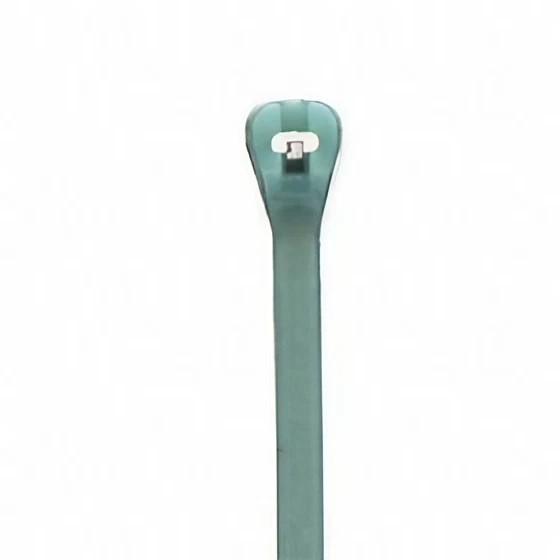Cable Ties for Laboratory Settings: Securing Equipment in Sensitive Environments
In the fast-paced and detail-oriented world of scientific research, laboratory organization is not just a matter of cleanliness – it's a necessity for efficiency and safety. Lab cable ties have emerged as an indispensable tool in this regard, offering a simple yet effective solution for managing the plethora of wires and cables associated with laboratory equipment.
Laboratory settings demand precision, accuracy, and utmost attention to detail. Whether you're a seasoned scientist or a lab technician, you understand the critical nature of securing equipment and cables in these sensitive environments. This is where cable ties step in as unsung heroes, ensuring safety, organization, and efficiency.
In this article, we'll delve into the world of cable ties designed specifically for laboratory use, exploring their essential features, benefits, and how they contribute to a seamless laboratory workflow.
The Importance of Cable Ties in Laboratories
Ensuring Safety and Order
In the bustling laboratory, where daily experiments and research happen, safety is paramount. Cable ties secure cables and wires, prevent tripping hazards, and reduce accident risks. They offer a sturdy, reliable grip, keeping wires organized and tangle-free.
Additionally, in labs handling hazardous materials or sensitive equipment, cable ties add protection. They securely fasten cables, reducing accidental spills or damage to fragile equipment.
Promoting Efficiency and Organization
Efficiency is the backbone of any successful laboratory operation. Cable ties contribute significantly to this aspect by maintaining an organized and clutter-free workspace. By bundling cables together, lab technicians can easily identify and access the necessary wires, saving valuable time during experiments or equipment maintenance.
Additionally, cable ties are available in various colors, allowing for color-coding of cables. This simple yet effective system enhances organization, making it effortless to trace and identify specific wires, even in complex setups.
Research has shown that proper cable management using cable ties can improve the efficiency of laboratory operations by up to 30% 1. This impressive statistic underscores the practical benefits of using cable ties in laboratory settings.
Choosing the Right Cable Ties for Your Laboratory
When selecting cable ties for your laboratory, several factors come into play. It's crucial to consider the material, size, and durability of the ties to ensure they meet the specific demands of your environment.
Material Matters
In laboratory settings, where exposure to chemicals and extreme temperatures is common, cable ties made from high-quality materials like nylon or polyethylene are ideal. These materials are known for their resistance to corrosion, UV rays, and chemicals, ensuring the longevity of the ties.
Size and Strength
The size and strength of cable ties should be carefully chosen to accommodate the cables and wires you need to secure. Opt for ties with higher tensile strength for heavy-duty applications, such as securing large bundles of cables or heavy equipment.
Reusable vs. Disposable
Consider whether you require disposable or reusable cable ties. Disposable ties are cost-effective for one-time use, while reusable ones offer long-term value and sustainability, reducing waste in the laboratory.
Our Top Picks
Product 1: HellermannTyton T50I0UVC2 UV Resistant Cable Tie
If you're in search of a robust cable tie designed to withstand the harshest of conditions, the HellermannTyton T50I0UVC2 is a top contender.
These cable ties are 12 inches long with a 50lb tensile strength. They're perfect for heavy-duty cables and wires. Made from Polyamide 6.6 UV-resistant material (PA66UV), they withstand UV rays well.
Key Features and Benefits
- UV Resistance: One of the standout features of these cable ties is their UV resistance. They are equipped with an inhibitor that extends their lifespan when exposed to UV radiation. This ensures that they remain reliable even in outdoor applications or areas with significant UV exposure.
- Strong Grip: Inside serrations on these ties provide a secure hold on cables and wire bundles, preventing slippage. This feature is essential for maintaining the organization and safety of your cables, especially in laboratory settings where precision matters.
- High Tensile Strength: Despite their slender profile, these cable ties offer impressive tensile strength with minimal insertion force. This design allows for a tight and secure fastening without causing damage to your cables.
- Quick Installation: The bent tail design of these ties simplifies the installation process, making it quick and hassle-free. This is particularly advantageous when you need to secure numerous cables efficiently.
Product 2: 4" 18lb UV Black Heat Stabilized Cable Ties
For those seeking a more budget-friendly cable tie option without compromising on quality, the 4" 18lb UV Black Heat Stabilized Cable Ties are worth considering.
These cable ties are 4 inches in length and offer a respectable 18lb tensile strength. They are crafted from heat-stabilized nylon 6/6, ensuring their durability and reliability even in demanding environments.
Key Features and Benefits
- Cost-Effective: These cable ties provide excellent value for their price, making them an attractive choice for various applications. They are suitable for tasks where extreme tensile strength is not a primary requirement.
- Heat Stabilized: The heat-stabilized nylon construction allows these ties to withstand temperatures ranging from -40°F (-40°C) to 239°F (115°C). This makes them versatile for both indoor and outdoor use.
- Flame Retardant: These cable ties are rated 94-V2 for flame resistance, adding an extra layer of safety in situations where fire hazards may be a concern.
- RoHS Compliant: They are compliant with the RoHS directive, which restricts the use of hazardous materials in electrical and electronic equipment.
The 4" 18lb UV Black Heat Stabilized Cable Ties come in a bag of 100 pieces, providing ample supply for your cable management needs. They are a cost-effective solution for those looking to organize cables efficiently without breaking the bank.
Product 3: Thomas & Betts Ty-Rap TYZ523M 4" 18lb Aqua Radiation Resistant Tefzel Fluoropolymer Cable Ties
When it comes to demanding environments where chemical resistance, high temperatures, and radiation resistance are paramount, the Thomas & Betts Ty-Rap TYZ523M cable ties excel. These 4-inch cable ties are designed for exceptional performance and durability, making them a go-to choice for specialized applications.
Key Features and Benefits
- Exceptional Material: Crafted from ETFE, these cable ties are known for their chemical resistance, high-temperature tolerance, and flame retardancy. They can withstand temperatures from -50°F (-46°C) to an impressive 302°F (150°C), making them suitable for extreme conditions.
- Radiation Resistance: These cable ties resist radiation, maintaining reliability in environments like nuclear power or healthcare.
- Stainless Steel Locking Device: A stainless steel barb locking device equips these ties for secure, tamper-resistant fastening.
- Wide Compliance: Thomas & Betts Ty-Rap TYZ523M cable ties comply with AH-2, EN, CSA Listed, and MIL-SPEC MS3367. This ensures suitability for diverse applications.
These cable ties are available in a distinctive aqua color, making them easily distinguishable in your cable management system. They are designed to excel in challenging conditions and maintain cable integrity.
Conclusion
In the world of laboratory settings, cable ties are the unsung heroes that ensure safety, organization, and efficiency. Their role in preventing accidents, promoting efficiency, and maintaining order cannot be overstated. When selecting cable ties for your laboratory, prioritize materials, size, and durability to meet the unique demands of your environment.
With the right cable ties in place, you'll not only enhance safety but also streamline your laboratory operations, ultimately contributing to the success of your scientific endeavors.




